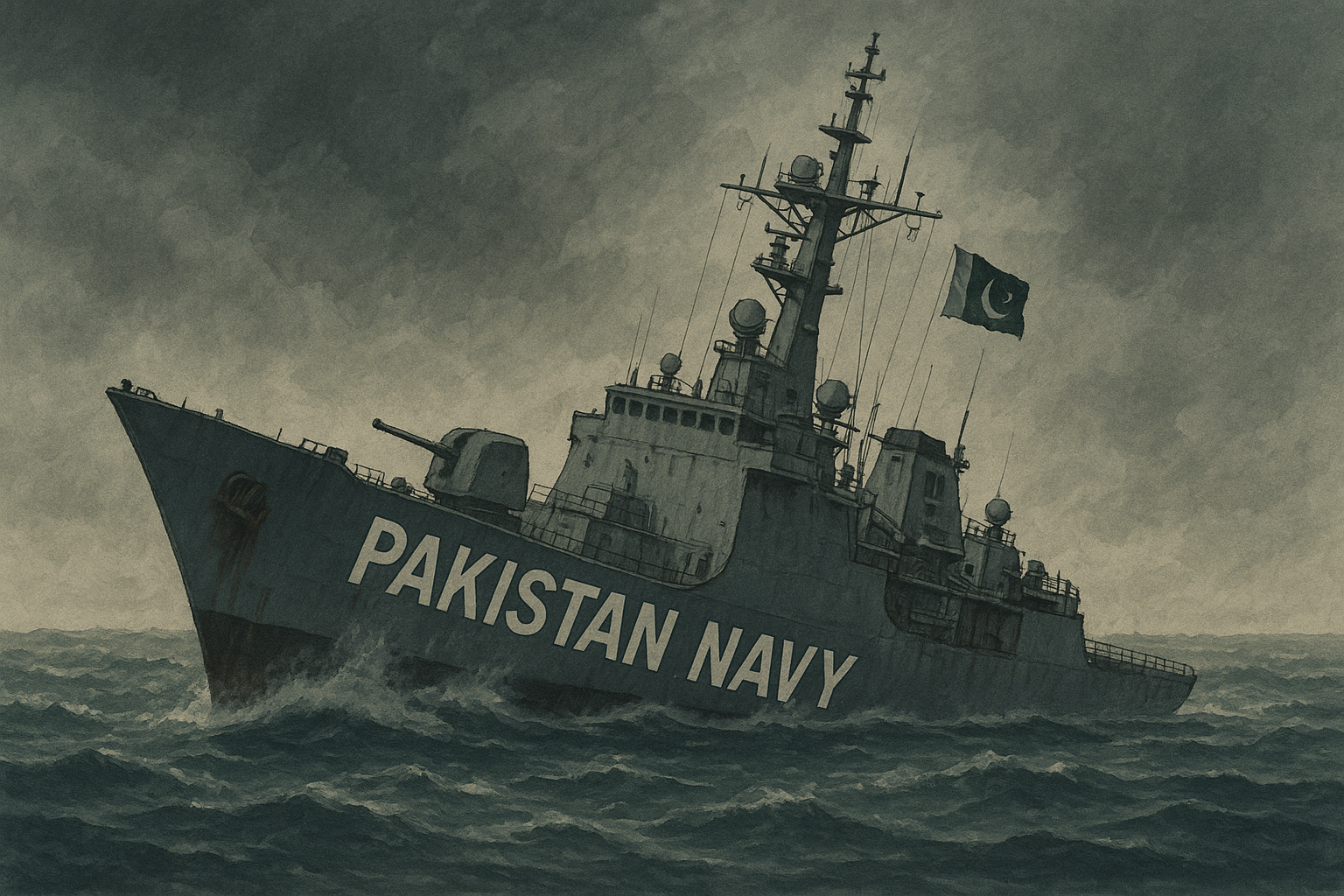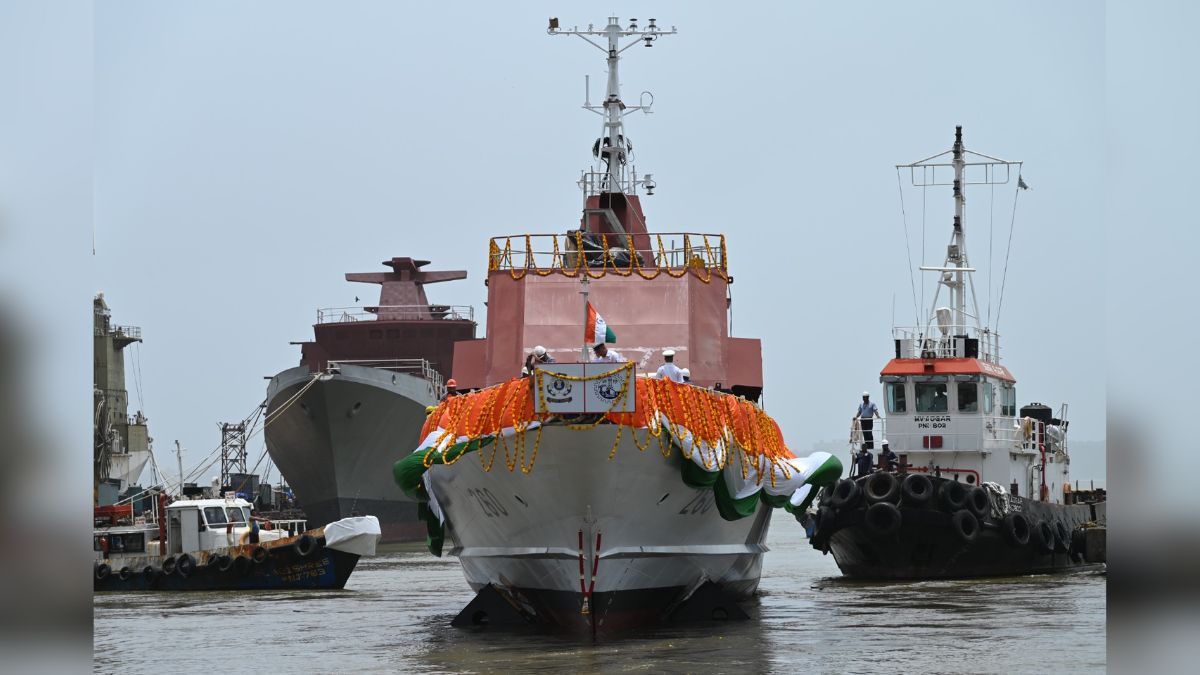Pakistan’s Navy is a Sinking Ship!

History shows us that nations or kingdoms that aspired to expand beyond their shores in the past or the current context, countries that aspire to be a global force to reckon with, relied heavily on their navy. Whether it was the British Empire or the Portuguese in the past or the United States in the modern era, they all relied heavily on their navy to exert influence around the world.
Closer to home, we have had the Marathas, led by Chhatrapati Shivaji Maharaj, and the Cholas, who were pioneers in developing a strong navy. In fact, the Cholas were renowned for their powerful navy and extensive maritime trade and conquests in the Far East. They used their trade ships for military purposes, including invasions of the Maldives, Sri Lanka, and various kingdoms in Southeast Asia, like Srivijaya (present-day Indonesia).
Taking inspiration from them, independent India has strived to have a strong navy. Aspiring to become a Blue Water navy and become the leader of the Global South, the Indian Navy is now the first responder in the Indian Ocean Region (IOR). It has not only been effective in responding to natural disasters and high sea piracy, but the Indian navy has shown its prowess in war – mainly in the 1971 Bangladesh Liberation War, wherein naval bombers flew from our aircraft carrier INS Vikrant to bomb strategic locations inside East Pakistan (now Bangladesh), destroyed Karachi harbour with a daring attack using missile boats or sinking Pakistani submarine PNS Ghazi.
In 1999, during the Kargil conflict, the Indian Navy, under Operation Talwar, blocked all assistance from reaching Pakistan via the Arabian Sea. This ensured that Pakistan could not sustain the battle for long and was forced to make a hasty retreat from the Kargil heights. While the Indian Navy did not see any action due to Pakistan’s non-confrontational approach in the maritime domain, it definitely had an overall impact on the logistics and morale front.
More recently, during the Operation Sindoor tri-service briefing, the Director General of Naval Operation highlighted that the Indian Navy had maintained continuous surveillance and was ready to deliver requisite firepower when ordered. The navy deployed 36 naval ships, including a Carrier Battle Group, establishing surveillance and a de facto blockade along Pakistan’s coast. Following India’s new “any attack equals act of war” policy, the navy is shifting strategy, requiring faster response times and potentially earlier escalation in future Pakistan conflicts.
In contrast, the Pakistan Navy remained a passive force, choosing not to climb the escalation ladder. This approach was more due to compulsion rather than choice. The Pakistan Navy is hampered by an acute shortage of modern frigates and submarines and is entirely lacking in destroyers and aircraft carriers.
India’s navy is significantly larger and more capable than Pakistan’s, with India having 293 vessels and Pakistan having 121. India’s navy includes two aircraft carriers, 18 submarines, and 13 destroyers, making it a blue-water navy capable of operating globally. Pakistan’s navy, by contrast, lacks aircraft carriers or destroyers and operates a smaller submarine fleet, making it a green-water navy primarily focused on coastal defence.
Heavily reliant on foreign-built platforms and external maintenance support, Pakistan’s naval posture is fundamentally defensive and lacks the cohesion, technological depth, and strategic autonomy required for credible power projection. On the contrary, India’s sustained investments in indigenous shipbuilding, advanced platforms, and blue-water doctrine have cemented its uncontested dominance at sea.
Pakistan’s most modern surface combatants, the Tughril and Zulfiquar-class frigates, are Chinese-built and limited in number. Of the five operational submarines, recent satellite imagery indicates only two are currently seaworthy, with the remainder undergoing prolonged maintenance or upgrades. The existing fleet relies on ageing Agosta-class submarines from France, with new Hangor-class submarines from China yet to be delivered in full.
Over 75 percent of Pakistan’s defence imports between 2018 and 2022 came from China, including nearly all new frigates, submarines, and missile systems. The fleet’s ongoing renewal heavily depends on Chinese (Type 054A/P frigates, Hangor-class submarines) and Turkish (MILGEM corvettes, Jinnah-class frigates) technology and expertise.
Maintenance, upgrades, and even construction of new platforms are conducted in partnership with foreign shipyards, leaving the Navy vulnerable to supply-chain disruptions and limiting strategic autonomy. Many platforms, especially in the submarine fleet, are decades old and require frequent overhauls, leading to poor operational availability. Integrating new Chinese and Turkish assets with legacy systems is incomplete, creating interoperability challenges.
Pakistan’s Zulfiquar-class frigates, built based on 1980s Chinese designs, are considered ageing and lack modern technology. The diesel-electric submarines Agosta-70 are of 70’s origin. The Italian-designed Midget submarines are also obsolete and lack the capabilities of modern submarines. The Pakistan Navy has a significant shortage of modern frigates and submarines, limiting its operational capabilities and leaving it vulnerable.
The operational limitations of Pakistan’s submarines profoundly affect its strategic deterrence. Although the Pakistan Navy considers the Babur-3 submarine-launched cruise missile (SLCM) as a cornerstone of its second-strike capability, independent analysts contest its official range of 450 km, suggesting an effective operational range closer to 250 km. This drastically limits strategic utility against inland Indian targets, compromising Pakistan’s deterrence posture.
Indian Navy’s might was on display at TROPEX 2025, the theatre-level operational exercise of the maritime force, held earlier this year. It demonstrated the Indian Navy’s robust, modern fleet capabilities, showcasing its ability to respond to diverse threats in a synchronised and integrated manner. This exercise highlighted advancements in areas like amphibious warfare, precise ordnance delivery, cyber and electronic warfare, and tactical operations, demonstrating the Navy’s readiness to defend national maritime interests.
The exercise successfully validated the Indian Navy’s concepts of operations, demonstrating their ability to respond to diverse threats in a synchronised and integrated manner. The exercise also highlighted India’s commitment to maintaining a robust maritime security posture in the region and beyond.
In comparison, the Pakistan Navy is a dwarf in front of its Indian counterpart. With the Pakistan Air Force already compromised during Operation Sindoor by the Indian Air Force and the army’s position already weakened, our western adversary should not even dream of taking on India in a full-scale war, as it is beyond their capacity to even cause a dent in the Indian armed forces.
(A seasoned defence and strategic affairs journalist with over 20 years of experience in print and digital media. Previously Deputy Editor at Herald Group of Publications and Resident Editor at Gomantak Times, he has extensively covered major events including the 26/11 Mumbai terror attacks and Maoist insurgencies. He is also the creator of the award-winning YouTube channel Uncovering India, which focuses on impactful social and developmental documentaries.







